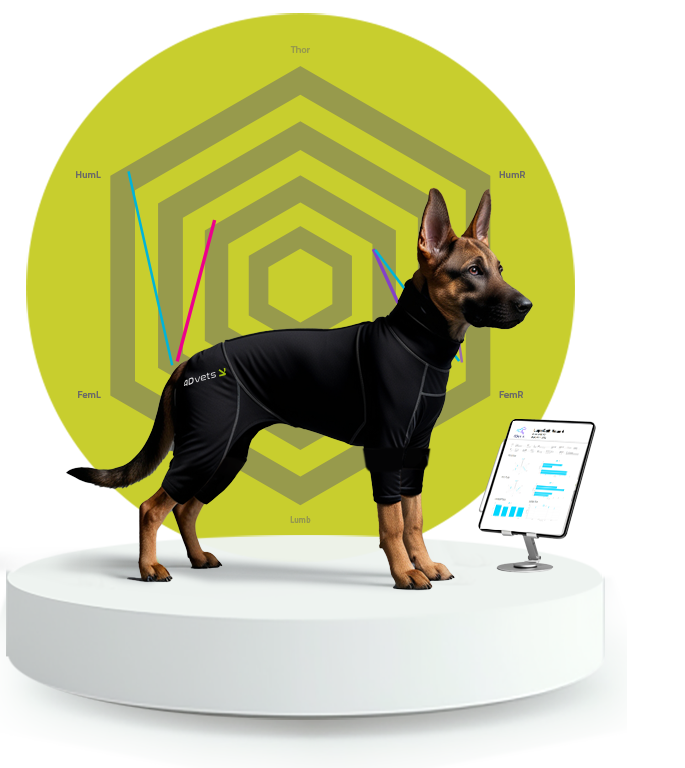Why gait analysis in dogs?
And why are X-rays, CT scans and MRIs not always enough?
Gait analysis in dogs is an innovative diagnostic tool that plays a key role in veterinary orthopaedics. Unlike static imaging methods like X-rays, CT scans, or MRIs, gait analysis focuses on movement, providing a dynamic view of a dog’s health.
The Basics of Gait Analysis
Gait analysis in dogs precisely records the movement sequences during walking or running. Systems such as LupoGait record data such as stride length, stance and swing phase, joint movements as well as symmetries and asymmetries. This information is essential for detecting functional movement disorders that remain invisible to the naked eye or conventional imaging methods.
Limits of X-ray, CT and MRI
Imaging procedures such as X-ray, CT and MRI are irreplaceable when it comes to visualizing structural changes in the skeleton, joints or soft tissue. They help, for example, in the diagnosis of fractures, herniated discs or tumors.
- Funktionelle Veränderungen: Röntgen oder MRT zeigen keine Bewegungsabläufe. Eine Ganganalyse hingegen erfasst dynamische Prozesse wie asymmetrische Belastungen oder kompensatorische Bewegungsmuster.
- Subtile Störungen: Mikroveränderungen im Gangbild, die auf frühe Stadien von Krankheiten wie Arthrose oder Hüftdysplasie hinweisen könnten, werden in der Bildgebung oft übersehen.
- Keine Belastungsinformationen: Bildgebende Verfahren zeigen nur den Zustand im Ruhezustand. Eine Ganganalyse hingegen deckt auf, wie sich Belastungen auf Gelenke und Muskeln auswirken.

Why is gait analysis a must-have?
Gait analysis in dogs offers a unique opportunity to assess the effects of pain, incorrect loading or restricted movement in everyday life. It is not just a supplement to existing procedures, but an independent diagnostic step with many advantages:
Individual therapy planning: Precise analysis of movement patterns allows targeted physiotherapy or orthopaedic measures to be developed.
Early detection: Small deviations in gait patterns can indicate problems before serious structural damage occurs.
Therapy monitoring: Progress following treatment or surgery can be objectively measured and documented.
Conclusion: More than just a look at the structure
Gait analysis in dogs is more than just a supplementary tool – it is a diagnostic method in its own right that analyzes movement and stress. While X-rays, CT and MRI provide static images, gait analysis provides dynamic insights that are crucial for targeted therapy.